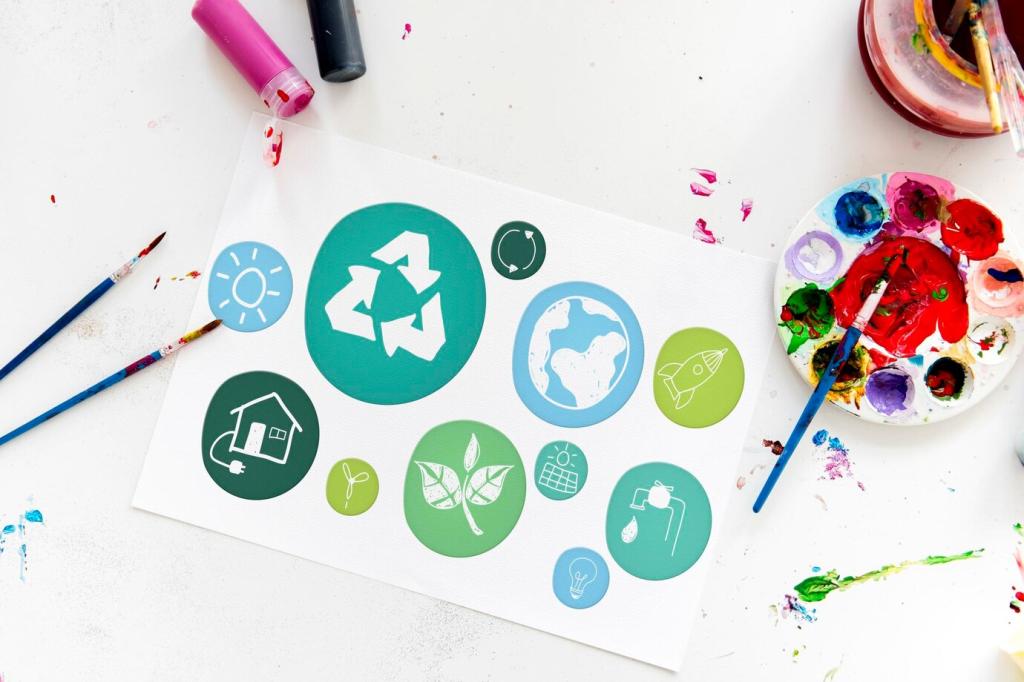Organic Textiles and Fabrics in Home Decor
Organic textiles and fabrics have become a prominent choice in contemporary home decor. They not only reflect a commitment to sustainability but also offer a unique blend of comfort, style, and health benefits. The integration of organic materials into living spaces goes beyond mere aesthetics, presenting an eco-friendly alternative that safeguards both the environment and personal well-being. In the world of home interiors, organic textiles are not just a trend—they represent a conscientious, enduring lifestyle choice that continues to shape modern home environments.
The Rise of Organic Textiles in Interior Design
Influences Shaping the Organic Movement
An increasing awareness of the environmental impact of conventional textiles has fueled the organic movement within interior design. Climate change concerns, media exposure to pollution created by conventional textile production, and the desire to minimize household toxins have collectively contributed to a surge in demand for organic fabrics. This movement is also influenced by the growing importance of personal well-being, prompting consumers to carefully select materials that support both human health and the planet’s future. As a result, designers now prioritize transparency and ethical sourcing to meet the evolving expectations of environmentally-attuned clients.
Essential Qualities of Organic Fabrics for Homes
Organic fabrics stand apart due to several fundamental qualities that directly benefit modern homes. Firstly, they are processed using non-toxic substances that greatly reduce exposure to harmful residues that may affect indoor air quality. Organic textiles are also renowned for their superior breathability and softness, enhancing comfort across various applications—be it bedding, drapery, or upholstery. These fabrics often come with certifications like GOTS (Global Organic Textile Standard), providing assurance regarding their authenticity and the sustainability of their entire supply chain. Homeowners therefore enjoy long-lasting, beautiful textiles while supporting the planet.
From Niche to Mainstream: Market Evolution
What began as a niche offering for eco-conscious shoppers has quickly moved into the mainstream. Retailers are expanding their collections to feature a variety of organic options due to rising customer demand and shifting industry standards. Innovative designers now integrate organic textiles alongside traditional high-end fabrics, adding value without compromising on style. As production methods become more scalable and cost-effective, accessibility grows, making organic textiles a realistic option for a wider audience. This mainstream embrace establishes organic textiles not merely as an alternative, but as an essential component of contemporary interior design.
Benefits of Using Organic Fabrics in Home Decor
01
Health and Wellness Advantages
Organic fabrics contribute significantly to creating healthier living spaces. Because they are produced without pesticides, formaldehyde, or toxic dyes, they minimize chemical exposure, which is especially important for those with allergies, asthma, or sensitive skin. The hypoallergenic properties of organic textiles make them ideal for bedrooms, nurseries, and living rooms, nurturing an environment that supports relaxation and well-being. Moreover, organic fabrics allow for improved air circulation compared to many synthetics, further enhancing indoor air quality and contributing to a more restorative home sanctuary.
02
Environmental Impact and Sustainability
One of the central advantages of organic textiles is their contribution to environmental sustainability. The cultivation of organic fibers avoids harmful herbicides and pesticides, promoting healthier ecosystems and more fertile soils. The reduced reliance on synthetic chemicals results in less water pollution and decreased carbon emissions throughout the production process. Additionally, organic fabrics are often biodegradable and require less energy to manufacture, completing the cycle of sustainability. By making organic choices, homeowners actively participate in conservation efforts and foster a greener future for the planet.
03
Aesthetic Versatility and Lasting Beauty
Organic textiles offer remarkable aesthetic versatility, complementing a wide range of decor styles from rustic modern to urban minimalist. Their naturally derived fibers possess subtle variations in texture and tone, lending depth and character to soft furnishings. Whether softened linen drapes or crisp organic cotton bedding, these fabrics age gracefully and resist pilling or fading, maintaining their beauty through everyday life. The understated sophistication of organic textiles helps cultivate welcoming interiors that balance visual harmony with tactile richness, providing a timeless foundation for evolving decor tastes.

Organic Cotton: Comfort and Adaptability
Organic cotton has earned its reputation as an indispensable fabric for home decor thanks to its soft texture, durability, and versatility. Its hypoallergenic qualities make it ideal for bedding, bath towels, and upholstered furniture, while its breathability ensures year-round comfort. Free from harmful residues, organic cotton supports healthy indoor environments, and its rich color retention introduces vibrancy to living spaces. As a material that balances practicality with luxury, organic cotton adapts seamlessly to a wide variety of applications, appealing to both classic and contemporary design aesthetics.
Linen: Timeless Elegance and Breathability
Linen remains a favorite among interior designers for its timeless elegance, lightweight feel, and remarkable breathability. Produced from organic flax, this textile is inherently strong and quick-drying, making it ideal for curtains, tablecloths, and bedding. Its natural luster and subtle irregularities contribute to a look of casual sophistication that transcends fleeting trends. Over time, linen becomes progressively softer and more beautiful with use, ensuring enduring satisfaction. Organic linen celebrates both the tactile and aesthetic dimensions of natural design, perfectly suited to relaxed, lived-in interiors.
Hemp: Durability Meets Sustainability
Hemp is quickly gaining traction in the organic textile domain due to its impressive durability and minimal environmental footprint. It thrives with little need for irrigation or pesticides, making it one of the most sustainable fabric choices available. Hemp’s exceptional strength lends itself well to high-traffic home decor items such as area rugs, slipcovers, and draperies. Its naturally resistant qualities to mold, mildew, and UV damage add to its suitability for both indoor and outdoor settings. As an organic fabric option, hemp delivers performance and longevity while embodying genuine eco-conscientiousness.
